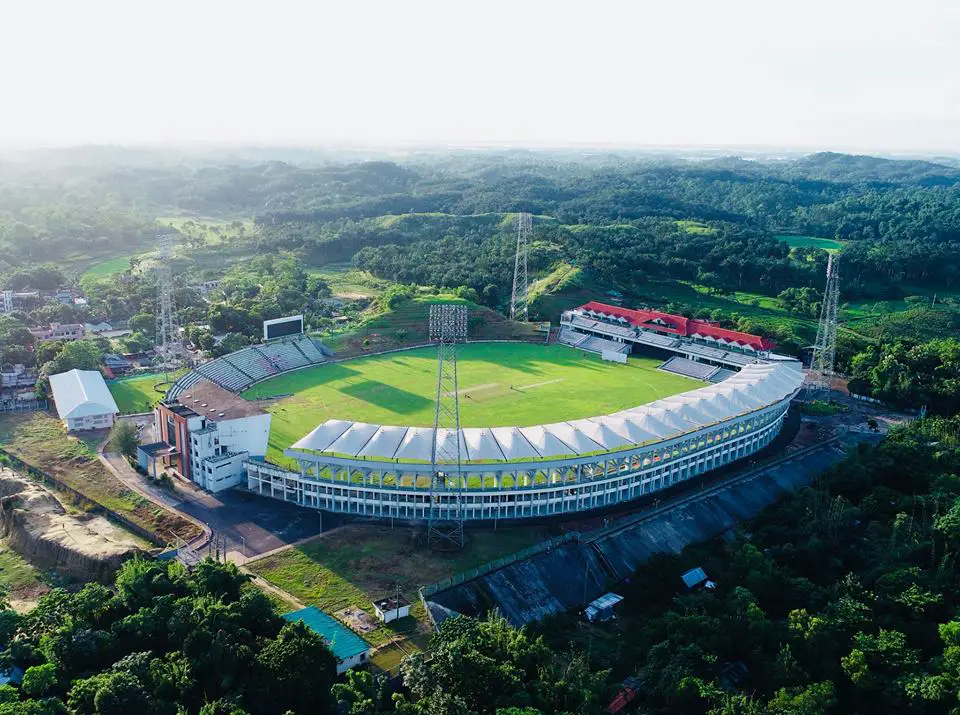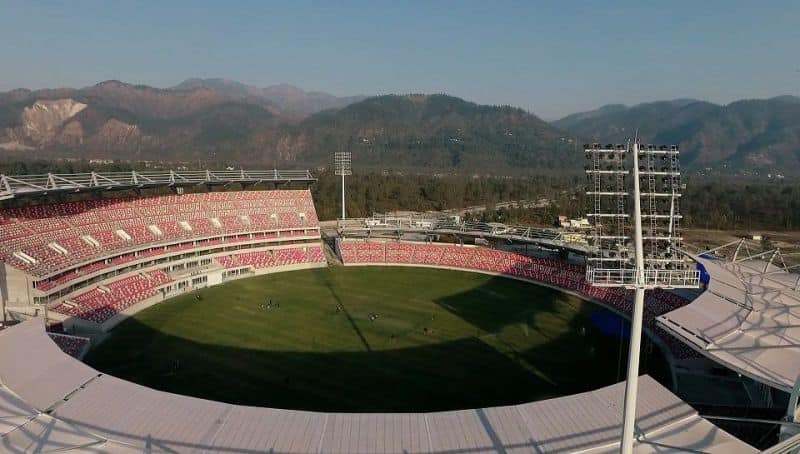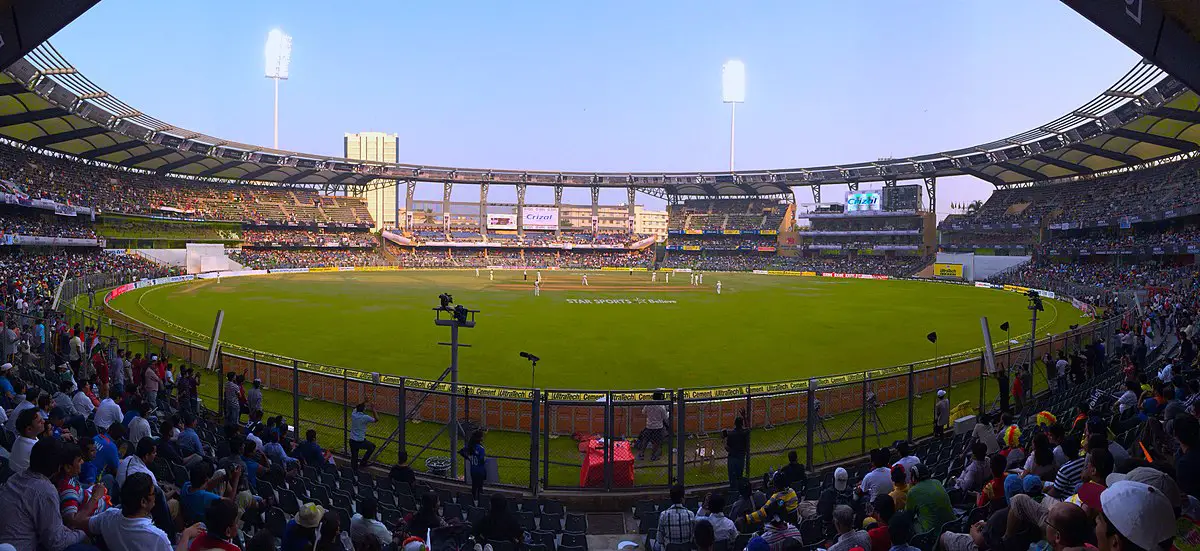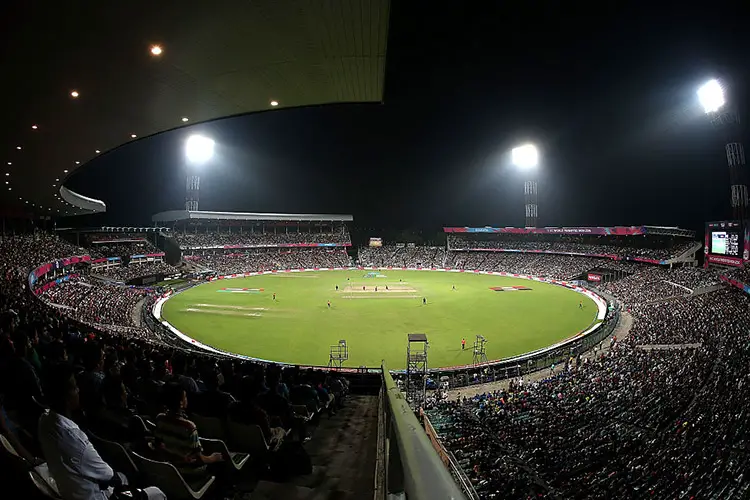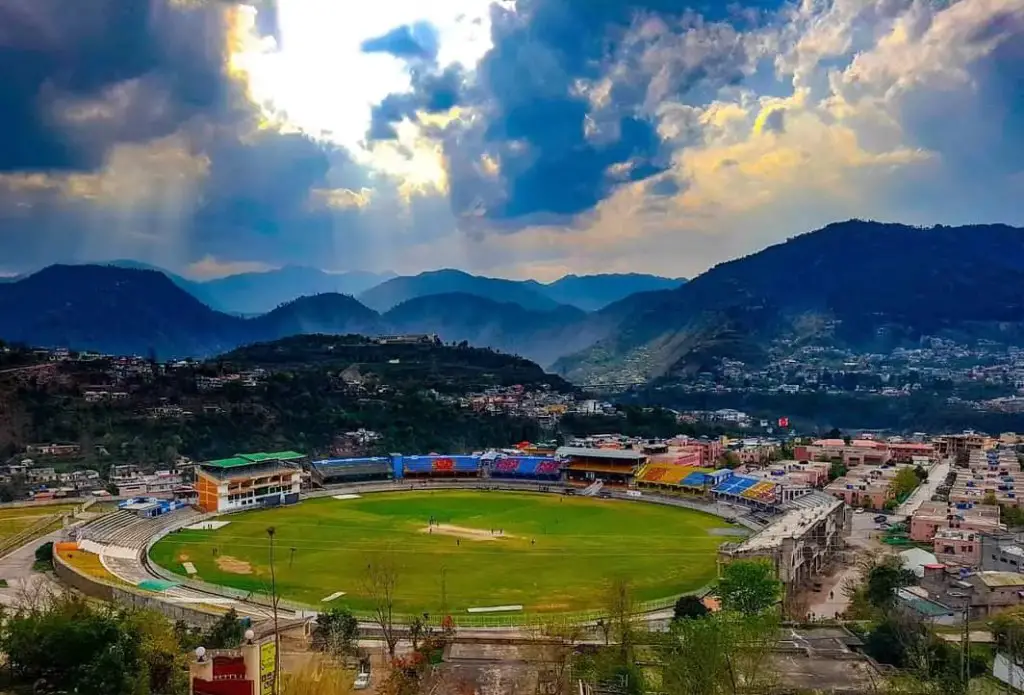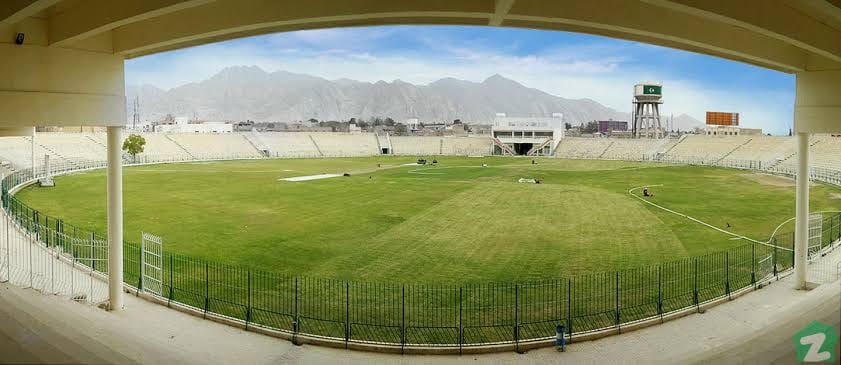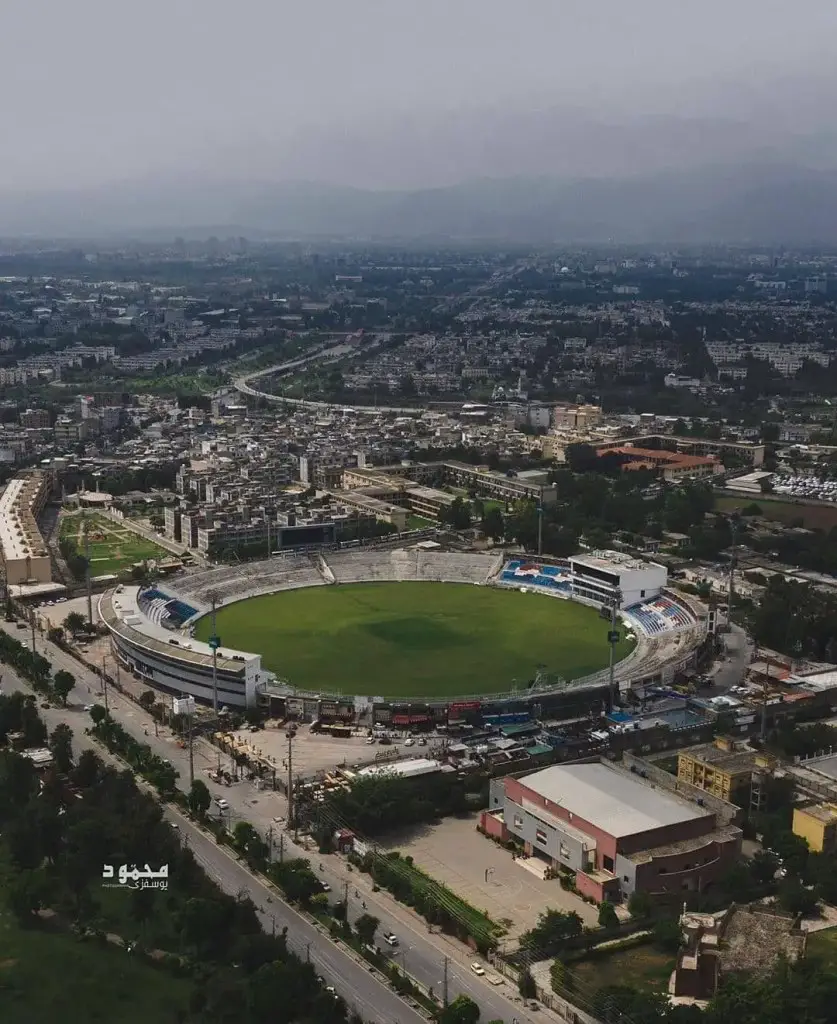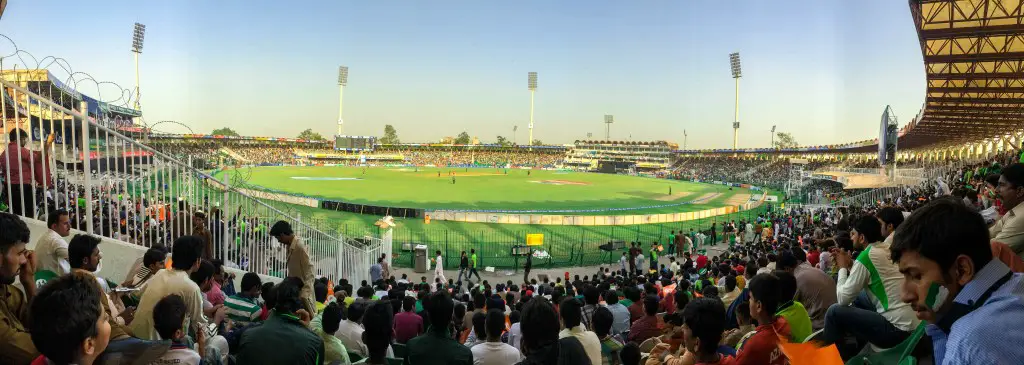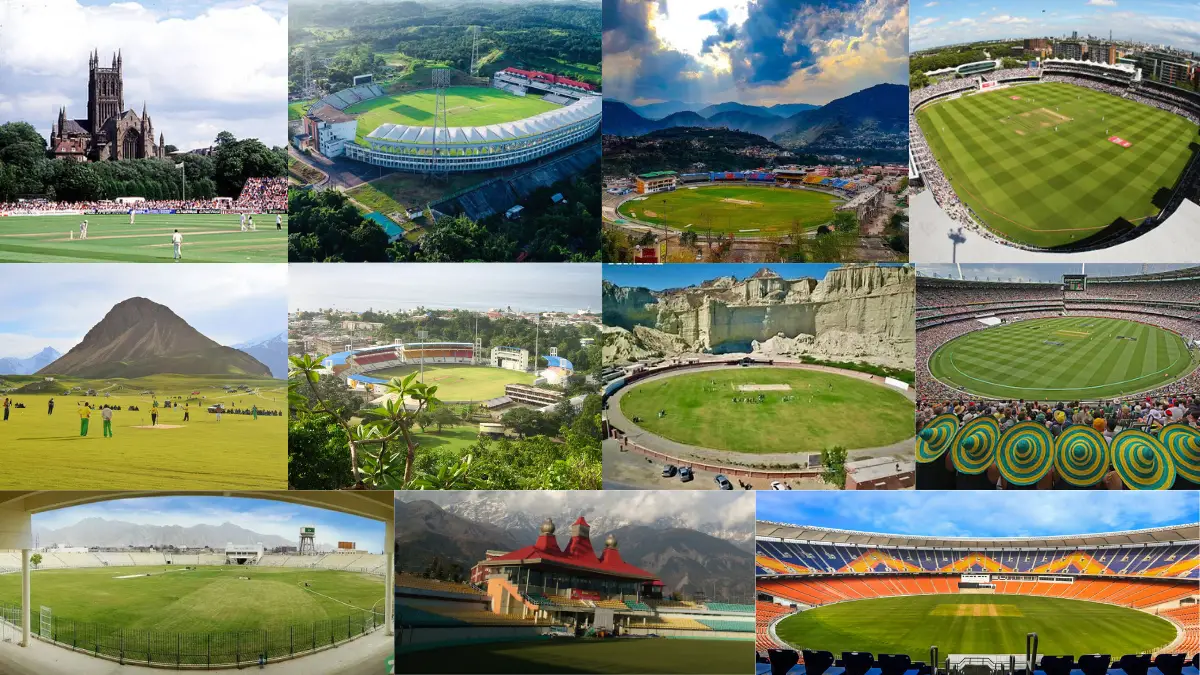155 Greatest Cricketers of All Time (Men’s): Who are the Best Players in Cricket History? (Updated 2023)
It’s time to discuss the greatest cricketers of all time. This ultimate list will feature 155 top cricketers across formats and eras—from WG Grace to Kieron Pollard.
Kieron Pollard and Dwayne Bravo just retired as players from the IPL and left their imprints on T20 cricket. As T20s evolve and become central to the cricketing universe, why not make a list of the greatest cricketers of all time across formats and eras?
Contents
- 156-177: Unlucky to Miss Out
- 101-155: List of 155 Greatest Cricketers of All Time
- 52-100: The Best of the Best
- 26-50: The Absolute Greats
- 1-25: The Undisputed Legends
- Honorable Mentions
- Greatest Cricketers of All-Time (Top 10 By Country)
- The Criteria
Key Takeaways
- Over 250 cricketers were considered for this list. We consider Tests, ODIs, T20Is, T20 leagues, and first-class cricket played over 145 years.
- Sir Donald Bradman is chosen as the Greatest Cricketer of All-Time with WG Grace, Sachin Tendulkar, Jack Hobbs, Shane Warne, Frank Worrell, and Sir Garfield Sobers close behind.
- England (40), Australia (31), West Indies (24) dominated the list due to their rich first class and World Cup histories. The breakdown of the rest of the countries are as follows: India (14), Pakistan (13), South Africa (12), Sri Lanka (10), New Zealand (7), Zimbabwe (1), Afghanistan(1), and Bangladesh (1).
Also Read:
- 76 Greatest Women Cricketers of All Time: Who are the top female cricketers in history?
- Top 5 Greatest Cricket Teams Ever To Be Assembled
- Top 17 Greatest Wicketkeepers in Cricket History (Men’s): Which Keepers Have the Most Dismissals Across Formats?
156-177 Best Cricketers: Unlucky to Miss Out
Those who were unlucky to miss out were:
Charles Bannerman, Johnny Tyldesley, Subhash Gupte, Mitchell Johnson, Mansur Ali Khan Pataudi, David Warner, Jeff Thompson, Shahid Afridi, Mark Waugh, Makhaya Ntini, Mike Brearley, Harbhajan Singh, Glenn Turner, Ben Stokes, Cheteshwar Pujara, Lance Klusener, Yuvraj Singh, Ian Healy, Vijay Hazare, Trent Boult, Ian Chappell, Saeed Ajmal
155 Greatest Cricketers of All Time: The Ultimate List
Picking the Top 155 players was a tough task, but do you know what was even tougher? Ranking them.
Without furthur ado, here is the list. Enjoy the classic photography and check out the videos linked under some players.
Disclaimer: The ranking is most likely going to not align with your views. Expect the unexpected. Several ‘great’ cricketers did not make the list (see the extended list of honorable mentions below) but the ones that did fundamentally helped change the game. Feel free to comment below on players who you think should be in the list.
155. Learie ‘Lord’ Baron Constantine (West Indies, 1921-1939)
Major Teams: West Indies, Barbados, Freelooters, Trinidad
An allrounder by trade, Constantine was one of West Indies’ early stars. More than his on-field accomplishments, he made an impact as a lawyer, politician, and Trinidad & Tobago’s High Commissioner to the UK.
Embed from Getty Images154. Alan Davidson (Australia, 1949-1963)
Major Teams: Australia, New South Wales
An Australian left-arm pacer who “would be the most menacing new-ball bowler of his day” and was a handy batter in the lower order—The original Mitchell Johnson and Mitch Starc.
Embed from Getty Images153. Mitchell Starc (Australia, 2009-)
Major Teams: Australia, Australia U-19, New South Wales, Sydney Sixers, Yorkshire, Royal Challengers Bangalore
Speaking of Australian left arm pacers, Mitchell Starc. His World Cup exploits are alone to guarantee him a spot in the all-time list. Player of the Tournament when he helped Australia lift the trophy in 2015, he bettered himself in 2019 with the record tally of 27 wickets. Starc’s yorkers, early swing, and ability to clean up tails will be remembered forever.
Embed from Getty Images152. Stan McCabe (Australia, 1928-1942)
Major Teams: Australia, New South Wales
Playing alongside Don Bradman, he was often overshadowed but was said to be a beautiful batter to watch. Even Sir Len Hutton remarked, “It would be hard to think of a greater Australian batsman. He had qualities that even Bradman hadn’t got.”He is best known for scoring 385 runs in that infamous Bodyline series.
Embed from Getty Images151. Sir Conrad Hunte (West Indies, 1950-1967)
Wisden remarks the Hunte “was one of the greatest West Indian batsmen of a great generation.” Even the great Desmond Haynes picked Hunte over himself in the All-Time Barbados XI “because he was simply the better batsman.”
Embed from Getty Images150. Godfrey Evans (England, 1939-1967)
Major Teams: England, Kent
ESPNCricinfo states that Evans was “arguably the best wicketkeeper the world has ever seen.” Played 91 Tests and even scored a couple of tons. Inflicted 1066 dismissals in his first-class career.
Embed from Getty Images149. Marvan Atapattu (Sri Lanka, 1988-2007)
Major Teams: Sri Lanka, Delhi Giant, Sinhalese Sports Club
From 0,0.0,1,0,0 to establishing himself as the backbone of Sri Lanka’s Test batting seven years later and ending with six double centuries is a beautiful story. Decent ODI player with 8500 runs as well.
Embed from Getty Images148. Hugh Tayfield (South Africa, 1945-1963)
Major Teams: South Africa, Rhodesia, Natal, Transvaal
Wisden remarks that Tayfield was “one of the greatest off spinners the game has ever seen.” Once took 9/113 in an innings.
Embed from Getty Images147. Sunil Narine (West Indies, 2009-)
Major Teams: West Indies, West Indies U-19s, Barisal Burners, Cape Cobras, Comilla Victorians, Dhaka Dynamites, Guyana Amazon Warriors, Kolkata Knight Riders, Lahore Qalandars, Melbourne Renegades, Montreal Tigers, Oval Invincibles, Quetta Gladiators, Sydney Sixers, Trinbago Knight Riders, Trinidad & Tobago
Redefined three aspects of the T20 game—economical spin bowling, the mystery spin, and pinch hitting.
Embed from Getty Images146. Mulvantrai ‘Vinoo’ Mankad (India, 1935-1962)
Major Teams: India, Bengal, Gujarat, Maharashtra, Mumbai, Rajasthan, Nawanagar
Although his name is infamously slandered for non-strikers run out, he was actually “one of the greatest allrounders India ever produced.”
Embed from Getty Images145. Richie Benaud (Australia, 1948-1964)
Major Teams: Australia, New South Wales
Before he was the voice of cricket, he was remembered as one of Australia’s greatest captains. His aggressive captaincy led to the first tied Test in cricket’s history. As a leg spinning allrounder, he was the first man to complete the double of 200 Test wickets and 2000 runs.
Embed from Getty Images144. Rohit Sharma (India, 2006-)
Major Teams: India, India U-19, Deccan Chargers, Mumbai Indians, Mumbai
264, 209, 208*, 171*, 162, 159, 152*, 150.
An ODI legend with a penchant for the mammoth hundreds. Easy on the eye, one of the best IPL captains, a T20 World Cup winner, and one of the best pullers the game has ever seen.
Embed from Getty Images143. Bob Simpson (Australia, 1952-1978)
Major Teams: Australia, New South Wales, Western Australia
Played the third longest Test innings (743 balls) when he scored 311 against England in 1964. A leg-spinner allrounder who became an opening Test batter is a noteworthy achievement.
Embed from Getty Images142. Peter May (England, 1950-1963)
Major Teams: England, Cambridge University, Surrey
Although he had a decent Test career, his first-class stats are outrageous—27592 runs with 85 hundreds.
Embed from Getty Images141. Saeed Anwar (Pakistan, 1986-2003)
Major Teams: Pakistan, Karachi, Lahore, United Bank Limited, Agriculture Development Bank of Pakistan
A graceful left-hander, his 194 withstood the test of time until Sachin Tendulkar’s 200 broke his record. Anwar was the highest scoring opener in the 1990s in ODI cricket.
Embed from Getty Images140. Sir Clyde Walcott (West Indies, 1941-1964)
Major Teams: West Indies, Barbados, British Guiana
One of the famous ‘3 Ws’ in West Indies’ middle order, he was a steady cog of West Indies’ middle order. 15 Test hundreds, 40 first class centuries, and Test average of 56.68. Fun fact, Walcott holds the record for the fewest ducks in career.
Also See: Sir Frank Worrell (#6), Sir Clyde Walcott (#134)
Embed from Getty Images139. Ted Dexter (England, 1956-1968)
Major Teams: England, Sussex, Cambridge University
Dexter scored 21150 first class runs with 51 centuries and had a 62-match Test career. He was known was his counter-attacking style of play.
Embed from Getty Images138. Sir Everton Weekes (West Indies, 1944-1964)
Major Teams: West Indies, Barbados
Weekes was one of the best in his time. Centuries in five consecutive innings, joint fastest to a 1000 Test runs, and ended with a Test average of 58.61.
Embed from Getty Images137. Shoaib Akhtar (Pakistan, 1994-2011)
Major Teams: Pakistan, Agriculture Development Bank of Pakistan, Chittagong Division, Durham, Islamabad Leopards, Khan Research Labs, Kolkata Knight Riders, Pakistan International Airlines, Rawalpindi, Somerset, Surrey, Worcestershire
An icon for Pakistan cricket and inspiration for fast bowlers around the world. Bowled the fastest recorded delivery at 161.3 kph, it’s a shame that injuries meant he had a start-stop career.
Also See: Brett Lee (#111), his chief competitor in the Pace Race.
Embed from Getty Images136. Basil D’Oliveira (England, 1964-1980)
Major Teams: England, Worcestershire
There’s a good reason why the England-South Africa trophy is named Basil D’Oliveira Trophy. As a South African-born mixed player, he was picked for England during the Apartheid era (known as the Oliveira affair). With 19,490 first class runs & important social legacy, he was named as South Africa’s Top 10 players of the century despite never representing the Proteas.
Embed from Getty Images135. Andy Flower (Zimbabwe, 1986-2006)
Major Teams: Zimbabwe, Essex, South Australia
The greatest Zimbabwean batter and scored the highest runs in an innings by any keeper (232*). Over 11,000 international runs across formats, Flower lead the way during Zimbabwe’s golden years.
Embed from Getty Images134. Wes Hall (West Indies, 1955-1971)
Major Teams: West Indies, Barbados, Queensland, Trinidad
The earliest in West Indies’ great line of pacers. Could bowl “close to 100 mph” and ended with 192 Test & 546 first class wickets.
Embed from Getty Images133. Rod Marsh (Australia, 1968-1984)
Major Teams: Australia, Western Australia
The most prolific bowler-keeper combination in the history of Test cricket is “c Rod Marsh, b Dennis Lillee” (95). World record holder for most Test dismissals at the time of his retirement, he was the best keeper Australia produced…until Ian Healy & Adam Gilchrist surpassed him.
Embed from Getty Images132. VVS Laxman (India, 1992-2012)
Major Teams: India, Deccan Chargers, Hyderabad, Kochi Tuskers Kerala, Lancashire
If you played the greatest innings of the twenty-first century, THAT 281*, you deserve to be on this list. Had a stellar Test career of performing under pressure with the lower order (and frequent back spasms).
Embed from Getty Images131. Stephen Fleming (New Zealand, 1991-2008)
Major Teams: New Zealand, Canterbury, Chennai Super Kings, Middlesex, Nottinghamshire, Wellington, Yorkshire
Solid opening batter & more importantly, a captain that stabilized New Zealand cricket.
Embed from Getty Images130. Andy Roberts (West Indies, 1969-1984)
Major Teams: West Indies, Combined Islands, Leeward Islands, Hampshire, Leicestershire, New South Wales
The face of West Indies’ pace quartet, his bouncers were ruthless. Apart from his 202 Test wickets, also had an effective ODI career—87 wickets at 20.35.
Embed from Getty Images129. Martin Crowe (New Zealand, 1979-1996)
Major Teams: New Zealand, Auckland, Central Districts, Wellington, Somerset
The greatest New Zealand batter of his generation and definitely one of the best captains. Hamstring Injury in the 1992 World Cup semi-final was a huge factor in their defeat. Apart from his cricketing talent, was one of the leading thinkers of the game.
Embed from Getty Images128. Clarrie Grimmett (Australia, 1911-1941)
Major Teams: Australia, South Australia, Victoria, Wellington
Credited for inventing the flipper, he was the second fastest to 200 Test wickets (and fastest before Yasir Shah) and the second oldest to take ten wickets in a Test match (44 years). New Zealand born Australian player.
Embed from Getty Images127. Tom Graveney (England, 1948-1972)
Major Teams: England, Queensland, Worcestershire, Gloucestershire
Another first-class giant—732 FC matches, 47.793 runs, 122 hundreds, and 233 fifties. Had a decent 79-Test career as well
Embed from Getty Images126. Arjuna Ranatunga (Sri Lanka, 1981-2001)
Major Teams: Sri Lanka, Sinhalese Sports Club
World Cup winning captain and helped propel Sri Lanka to the global stage. With over 7000 ODI runs, was a useful left-handed middle order batter.
Embed from Getty Images125. Greg Chappell (Australia, 1966-1984)
Major Teams: Australia, New South Wales
Regarded as one of the best batters to ever don the baggy green. 7110 runs with 24 Test tons at 53.86 looks especially great given that batted in the era of the ferocious West Indian attack.
Embed from Getty Images124. David Gower (England, 1975-1993)
Major Teams: England, Hampshire, Leicestershire
One of the most elegant left-handed batters to play the game. 8,231 Test runs, 18 Test centuries, and 117 matches. Solid.
Embed from Getty Images123. Michael Holding (West Indies, 1972-1989)
Major Teams: West Indies, Canterbury, Derbyshire, Jamaica, Lancashire, Tasmania
Although 249 Test wickets at an average of 23.68 & 50.9 strike rate already puts him in the top echelons of world cricket, it was his impact with sheer pace and that menacing action that took him to the next level. An iconic commentator as well.
Embed from Getty Images122. Kieron Pollard (West Indies, 2007-)
Major Teams: West Indies, West Indies U-19, Adelaide Strikers, Barbados Tridents, Cape Cobras, Deccan Gladiators, Dhaka Dynamites, Karachi Kings, Kerala Kings, London Spirit, Melbourne Renegades, Multan Sultans, Mumbai Indians, Peshawar Zalmi, Somerset, South Australia, St. Lucia Stars, Stanford Superstars, Toronoto Nationals, Trinbago Knight Riders, Trinidad, Welsh Fire
With almost 12,000 T20 Runs at 150.25 SR, batting predominantly at the lower order, Kieron Pollard was arguably the first bona fide T20 globetrotter. A pioneer in T20 power-hitting and mainstay for the Mumbai Indians in their 5-peat, he was a crucial member of West Indies’ 2012 T20 World Cup victory.
Embed from Getty Images121. Michael Clarke (Australia, 2000-2015)
Major Teams: Australia, New South Wales, Hampshire, Pune Warriors
Had one of the greatest peaks of a Test batter. 1595 runs at 106.33 with 5 hundreds, including a 329* and a couple of double hundreds. Captain of Australia’s 2015 World Cup victory.
Embed from Getty Images120. Mark Boucher (South Africa, 1995-2012)
Major Teams: South Africa, Border, Cape Cobras, Kolkata Knight Riders, Royal Challengers Bangalore
The wicketkeeper during South Africa’s golden generation and the most prolific keeper of all-time. Unfortunately, a bail hitting his eye ended his career. Played 147 Tests and inflicted an iconic 999 international dismissals (555 Tests, 425 ODIs, 19 T20Is).
I will remember him for hitting the winning runs in that famous 434-438 match.
Embed from Getty Images119. Aravinda de Silva (Sri Lanka, 1983-2002)
Major Teams: Sri Lanka, Nondescripts Cricket Club, Kent, Auckland
107*(124), 3/42, & 2 catches—One of the best performances in a World Cup final. With over 15,000 international runs, Aravinda played his part in bringing Sri Lanka to the top tiers of world cricket.
Embed from Getty Images118. Joel Garner (West Indies, 1975-1992)
At 6 ft 8 inches, Garner towered above all and provided West Indies with that extra edge. With 259 Test wickets at 20.97 and 146 ODI wickets, he was one of the best. Holds the record for the best ODI economy (3.09) and won the 1979 WC final with a 5/38 show.
Embed from Getty Images117. Abdul Qadir (Pakistan, 1975-1994)
Major Teams: Pakistan, Punjab, Lahore, Habib Bank Limited
One of the best leg spinners of all time. What a classic action.
Embed from Getty Images116. Allan Donald (South Africa, 1985-2004)
Major Teams: South Africa, Free State, Warwickshire, Worcesterershire
Before there was Steyn, Morne Morkel, Makhaya Ntini, and Kagiso Rabada, there was Allan Donald. Bowled with menace and one of South Africa’s premier icons after they were reinstated in international cricket. Will also be remembered to be at the receiving end in the most infamous run-out of them all.”
Also Read: 16 South Africa World Cup Chokes and Heartbreaks: The Complete List
Embed from Getty ImagesMajor Teams: West Indies, Barbados, Somerset, South Australia
115. Brett Lee (Australia, 1999-2012)
Major Teams: Australia, Kings XI Punjab, Kolkata Knight Riders, New South Wales, Otago, Sydney Sixers, Wellington
Probably the smoothest fast bowling action of all time. Over 700 international wickets, never compromised on pace despite injuries, THAT chainsaw celebration, and ended cricket career with a magnificent final over in the Big Bash.
Also See: Shoaib Akthar.
Embed from Getty Images114. Hashim Amla (South Africa, 2004-)
Major Teams: South Africa, Barbados Tridents, Cape Cobras, Derbyshire, Dolphins, Essex, Khulna Tigers, Kings XI Punjab KwaZulu-Natal, Surrey, Trinbago Knight Riders
Elegant, high-class opener, and a massively underrated ODI batter. 55 International centuries, fastest to 7000 ODI runs, a triple centurion, partnership maker. From blockathons to two hundreds in T20 cricket, versatility was Amla’s strength.
Embed from Getty Images113. Kevin Pietersen (England, 1997-2018)
Major Teams: England, Deccan Chargers, Delhi Daredevils, Dolphins, Hampshire, KwaZulu-Natal, Melbourne Stars, Nottinghamshire, Quetta Gladiators, Rising Pune Supergiants, Royal Challengers Bangalore, St. Lucia Zouks, Sunrisers Hyderabad, Surrey
The ODI series against home country, South Africa, would sum up his career. Had his doubters early on with the rebel style, but his gameplay was too good to ignore. The 2005 Ashes, 2010 T20 World Cup, and 2012 Test series victory in India. England legend, just left with self-inflicted unfortunate circumstances.
Also Read: 42 South African Born Cricketers Who Play for Other Countries: Can You Guess Them All?
Embed from Getty Images112. Saqlain Mushtaq (Pakistan, 1995-2008)
Major Teams: Pakistan, Islamabad Cricket Association, Lahore Badshahs, Pakistan International Airlines, Surrey, Sussex
Fastest bowler to take 250 ODI wickets, most wickets ever in a calendar year (twice), and most famously known for bringing the ‘Doosra’ to prominence.
Embed from Getty Images111. Michael Bevan (Australia, 1989-2006)
Major Teams: Australia, Tasmania, New South Wales, Yorkshire, Kent, Leicestershire, Sussex
Before MS Dhoni, Michael Bevan pioneered the ‘finisher’ role in ODI cricket. Averaging 53.98 after 232 matches, remaining unbeaten and hitting last-ball boundaries to win matches was his specialty.
Embed from Getty Images110. Hedley Verity (England, 1930-1939)
Major Teams: England, Yorkshire
1956 first class wickets at 14.90 average with best figures for 10/10 in an innings. Died as a prisoner of war in World War II.
Embed from Getty Images109. Rangana Herath (Sri Lanka, 1999-2019)
Major Teams: Sri Lanka, Kandurata Maroons, Moors Sports Club, Tamil Union Cricket and Athletic Club, Wayamba, Surrey, Hampshire
A specialist of sorts. If ever a bowler was needed on spinning tracks in the fourth innings, it was Herath. 433 Test wickets and Sri Lanka’s only hope in the transition years.
Embed from Getty Images108. Kane Williamson (New Zealand, 2007-)
Major Teams: New Zealand, New Zealand U-19, Northern Districts, Yorkshire, Gloucestershire, Edmonton Royals, Sunrisers Hyderabad
The best batter New Zealand ever produced and a shrewd captain. Lead the Kiwis to their first global title along with the 2019 ODI World Cup final.
Also Read: World Test Championship Final Review 2021
Embed from Getty Images107. Rashid Khan (Afghanistan, 2015-)
Major Teams: Afghanistan, Afghanistan U-19, Kabul, Adelaide Strikers, Gujarat Titans, Sunrisers Hyderabad, Barbados Tridents, Comilla Victorians, Durban Heat, Kabul Eagles, Lahore Qalandars, Maratha Arabians, MI Cape Town, MI Emirates, Nangahar Leopards, Quetta Gladiators, St. Kitts and Nevis Patriots, Sussex, Trent Rockets
Not many have seen a rise as exponential as Rashid Khan has in cricket. 501 T20 wickets in 374 T20 matches. Already a legend and sought out for, he has played in almost every league around the world. Afghanistan cricket rises when Rashid Khan rises.
Embed from Getty Images106. Virender Sehwag (India, 1997-2015)
Major Teams: India, Delhi Leicestershire, Delhi Daredevils, Kings XI Punjab
You would think aggressive batting meant Sehwag would be dangerous in limited overs cricket. He was, but he truly changed the role of the opening batter in Test cricket. First ball boundaries and hitting double centuries in a single day was his forte. 319, 309, and 293 will be remembered forever.
Embed from Getty Images105. Lance Gibbs (West Indies, 1953-1976)
Major Teams: West Indies, British Guiana, South Australia, Warwickshire
First spinner to pass 300 wickets and accumulated 1024 first class wickets, he will go down as West Indies’ greatest Test spinner. Has a Test hat-trick and once bowled a miserly spell of 53.3-37-38-8. Wow.
Embed from Getty Images104. Brendon McCullum (New Zealand, 1999-2019)
Major Teams: New Zealand, Brisbane Heat, Canterbury, Chennai Super Kings, Glamorgan, Gujarat Lions, Kochi Tuskers Kerela, Kolkata Knight Riders, Lahore Qalandars, New South Wales, Otago, Royal Challengers Bangalore, Sussex, Toronto Nationals, Trinbago Knight Riders, Warwickshire
Match after match, captain McCullum would announce that this journey was ‘the time of their lives’ in the 2015 World Cup hosted at home. Took New Zealand to the World Cup finals for the first time, brought NZ out of lows of 2012, and for all his T20 exploits, had the skill to score 302 vs India I’m a Test match. Retired with the fastest Test century of all-time. Also credited for launching the IPL with a remarkable 158.
Embed from Getty Images103. Arthur Morris (Australia, 1940-1955)
Major Teams: Australia, New South Wales
One of the best Ashes batters, a member of the ‘Invincibles,’ Australian army man during World War II, and a rugby player, Morris can truly say he did it all.
Embed from Getty Images102. Lasith Malinga (Sri Lanka, 2001-2020)
Major Teams: Sri Lanka, Galle Cricket Club, Kandy, Kent, Galle Gladiators, Jamaica Tallawahs, St. Lucia Zouks, Guyana Amazon Warriors, Melbourne Stars, Rangpur Riders, Southern Express, Kent, Mumbai Indians
Malinga built a career out of pinpoint accurate yorkers and a slingy action. 4 wickets in 4 balls, couple of other hat-tricks, a T20 World Cup, and several IPL trophies with Mumbai Indians. Simply a legend.
Also Read: Lasith Malinga: The Slinga, Slayer, and SuperStar
Embed from Getty Images101. Shane Watson (Australia, 2000-2016)
Major Teams: Australia, Australia U-19, New South Wales, Queensland, Tasmania, Brisbane Heat, Sydney Sixers, Sydney Thunder, Canterbury, Chennai Super Kings, Royal Challengers Bangalore, Rajasthan Royals, Dhaka Dynamites, Rangpur Rangers, Islamabad United, Quetta Gladiators, St. Lucia Zouks
History will regard Shane Watson in awe. Gifted with a rare combination of skills, he established himself as a fast-bowling order who could bat in the top order. Player of the tournament in the 2012 T20 World Cup, 2008 & 2013 IPLs, the 2009 Champions Trophy, and key play-off knocks with CSK in the 2019 IPL, he stood up on the big occasions. A successful Test opener between 2009-10 alongside Simon Katich speaks to his versatility.
Embed from Getty ImagesList of the 100 Greatest Cricketers of All Time
The Top 100 cricketers of all time will at least consist of all the 10,000 runs scorers (either format), or members of the 500+ (Test), 400+ (ODI) wicket taker group.
100. Tillakaratne Dilshan (Sri Lanka, 1993-2017)
Major Teams: Sri Lanka, Basnahira South, Bloomfield Cricket and Athletic Club, Delhi Daredevils, Guyana Amazon Warriors, Kalutara Town Club, Karachi Kings, Northern Districts, Peshawar Zalmi, Royal Challengers Bangalore, Sebastianites Cricket and Athletic Club, Singha Sports Club, Surrey, Tamil Union Cricket and Athletic Club
Dilshan is one of the most innovative cricketers of the modern era. Known for ‘The Dilscoop,’ he was one of the pillars of the Sri Lankan in their 2014 T20 World Cup victory, along with numerous other finals between 2007-2014. Also a handy off-spinner & acrobatic fielder.
Also Read: My Favorite Player from Each Country: Unity In Diversity XI – #5 Will Shock You
Embed from Getty Images99. Sourav Ganguly (1989-2012)
Major Teams: India, Bengal, Glamorgan, Lancashire, Northamptonshire, Kolkata Knight Riders, Pune Warriors
Changed how India was viewed. Captained India to the 2003 World Cup final and several overseas Test victories. I will forever remember him for his ODI exploits and down the ground sixes.
Embed from Getty Images98. Monty Noble (Australia, 1893-1920)
Major Teams: Australia, South Australia, Queensland, Somerset
Noble is “regarded as the greatest Australian all-rounder ever produced by Australia.” In all, he took 624 first class wickets and hit 37 centuries as well.
Embed from Getty Images97. Younis Khan (Pakistan, 1998-2018)
Major Teams: Pakistan, Surrey, Nottinghamshire, Warwickshire, Yorkshire, South Australia, Rajasthan Royals
One of the only constants in Pakistan’s era of uncertainty. 10,000 runs Test runs, crisis man in the 4th innings, solid ODI batter & slip fielder, and a T20 World Cup winning captain.
Embed from Getty Images96. Neil Harvey (Australia, 1946-1963)
Major Teams: Australia, South Australia, Victoria
One of the best Australia ever had. In just 79-Tests, he scored 21 tons and 24 half centuries. The fourth fastest to a 1000 Test runs.
Embed from Getty Images95. Bishan Singh Bedi (India, 1961-1982)
Major Teams: India, Delhi, Northern Punjab, Northamptonshire
Part of India’s spin quartet, Bedi had it all—the flight, guile, turn, and grace. With plenty of county experience, he ended with a mammoth 1560 first class wickets.
Embed from Getty Images94. Nathan Lyon (Australia, 2011-)
Major Teams: Australia, South Australia, New South Wales, Adelaide Strikers, Sydney Strikers
A mainstay in Australia’s bowling line up. Bowling on Australian pitches for the majority of his career, Lyon became the tireless figure. Consistent line and length. Ball after ball. For an entire decade. 450+ Test wickets and counting.
Embed from Getty Images93. Inzamam Ul Haq (Pakistan, 1986-2007)
Major Teams: Pakistan, Faisalabad, Multan, Rawalpindi, Yorkshire
Forever taunted for the run-outs, hit-wickets, and fitness issues, Inzamam ul-Haq was the catalyst to Pakistan’s 1992 world cup win. Scored almost 12,000 ODI and 9,000 Test runs. Beautiful to watch.
Embed from Getty Images92. Ross Taylor (New Zealand, 2002-2022)
Major Teams: New Zealand, New Zealand U-10, Central Districts, Durham, Sussex, Middlesex, Victoria, Guyana Amazon Warriors, Jamaica Tallawahs, St. Lucia Zouks, Trinidad & Tobago Red Steel, Victoria, Delhi Daredevils, Pune Warriors, Rajasthan Royals
The best #4 ODI batter of all-time and between 2016-19, was the best ODI batter. Started as a leg side slogger and became a steady middle order batter. Nice to sign off with an unbeaten knock in New Zealand’s WTC win.
Also Read: Ross Taylor, An Underrated Cricketer Who Was A Giant Among New Zealand’s Greatest Generation
Embed from Getty Images91. Dwayne Bravo (West Indies, 2001-)
Major Teams: West Indies, Mumbai Indians, Chennai Super Kings, Gujarat Lions, Chittagong Kings, Comilla Victorians, Dhaka Dynamites, Dolphins, Essex, Fortune Barishal, Kent, Lahore Qalandars, Maratha Arabians, Melbourne Renegades, Northern Superchargers, Paarl Rocks, Peshawar Zalmi, Quetta Gladiators, St. Kitts and Nevis Patriots, Surrey, Sydney Sixers, Trinbago Knight Riders, Trinidad & Tobago, Victoria, Winnipeg Hawks
614 T20 wickets, highest T20 wicket-taker of all time. Could hit sixes and bowl slow yorkers at will. A modern-day legend for the West Indies.
Embed from Getty Images90. Stuart Broad (England, 2005-)
Major Teams: England, Leicestershire, Nottinghamshire, Kings XI Punjab, Hobart Hurricanes
Statistically, the second highest fast bowling wicket-taker of all-time. Speaks of his fitness. Could get hit for six sixes or bowl spells to remember forever. At one point, also a handy batter down the order.
Embed from Getty Images89. Daniel Vettori (New Zealand, 1996-2015)
Major Teams: New Zealand, Northern Districts, Nottinghamshire, Warwickshire, Queensland, Delhi Daredevils, Royal Challengers Bangalore, Jamaica Tallawahs
705 international wickets, 6 Test hundreds, youngest Test player for New Zealand. One of the underrated greats of the game.
Embed from Getty Images88. Ravichandran Ashwin (India, 2010-)
Major Teams: India, Tamil Nadu, Chennai Super Kings, Rising Pune Supergiants, Delhi Capitals, Kings XI Punjab, Rajasthan Royals, Nottinghamshire, Worcestershire
5 Test Hundreds. One of the greatest off spinners of all-time. Removed the stigma of non-strikers run-out almost single-handedly. Pioneered the ‘retired out’ in T20 cricket. Improved his batting to be a #3 in T20s, a decent finisher, Test match blockathon-specialist, off-spinner, leg-spinner, mystery spin, carrom ball. Has a succesfful YouTube channel. Cricket improviser at his absolute best. Ahead of his times.
Embed from Getty Images87. Jim Laker (England, 1946-1965)
10/53 & 19/90, Test figures that took Laker into greatness. With 1944 first class wickets, he had a stellar career throughout.
Major Teams: England, Essex, Surrey, Auckland
Embed from Getty Images86. Alan Knott (England, 1964-1985)
Major Teams: England, Kent, Tasmania
5 Test hundreds as a wicketkeeper, he was highly rated behind the stumps.
Embed from Getty Images85. Ray Lindwall (Australia, 1941-1962)
Major Teams: Australia, South Australia, Queensland
With a smooth action, Lindwall was Australia’s premier swing bowlers. Retired with 228 Test wickets and two centuries.
Embed from Getty Images84. Michael ‘Colin’ Cowdrey (England, 1950-1976)
Major Teams: England, Gentlemen, Oxford University, Kent
Cowdrey was the first man to play 100 Tests. His exploits in first class cricket are well known—42719 runs, 107 hundreds.
Embed from Getty Images83. Sir Geoffrey Boycott OBE (England, 1962-1986)
Major Teams: England, Yorkshire, Northern Transvaal
Although Boycott had his troubles off the field, on the field, he was one of the great ones. In his era, not many scored more than his 151 first class hundreds and 8114 Test runs.
Embed from Getty Images82. Keith ‘Nugget’ Miller (Australia, 1937-1959)
Major Teams: Australia, New South Wales, Victoria, Nottinghamshire
Miller is regarded as Australia’s greatest ever all-rounder. Although 2958 runs & 170 Test wickets flatter to deceive now, it was the best figures for an allrounder at the time.
Embed from Getty Images81. Aubrey Faulkner (South Africa, 1902-1924)
Regarded as “one of the greatest allrounders,” he opened both the batting and bowling at times. Based on ESPNCricinfo’s weighted allrounder analysis, Aubrey Faulkner just edges out Keith Miller.
Major Teams: South Africa, Transvaal, Marylebone Cricket Club (MCC)
Embed from Getty Images80. Ken Barrington (England, 1953-1968)
Major Teams: England, Surrey
Perhaps England’s greatest middle order batter. Now has the ninth highest Test average (58.67) after 82 Tests.
Embed from Getty Images79. Graham Gooch (England, 1973-2000)
Major Teams: England, Essex, Western Province
Graham Gooch has perhaps scored the most runs. EVER. 44,846 First Class runs with 128 hundreds & 217 fifties to go along with 22, 211 List A runs with 44 hundreds and 139 fifties. In international cricket, he amassed 8900 Test runs, 4200 ODI runs, and 28 tons overall.
Embed from Getty Images78. Graeme Smith (South Africa, 1999-2014)
Major Teams: South Africa, Gauteng, Western Province, Somerset, Surrey, Cape Cobras, Rajasthan Royals
One of the greatest captains and grittiest opening batters of all-time. Batting with a broken hand against Mitchell Johnson in attempt to save a Test match will go down as one of the most courageous acts on the cricket field.
Also Read: Top 11 Cricketers Who Retired Too Early – The Lost Generation
Embed from Getty Images77. Chaminda Vaas (Sri Lanka, 1990-2012)
Major Teams: Sri Lanka, Basnahira North, Colts Cricket Club, Deccan Chargers, Hampshire, Middlesex, Northamptonshire, Worcestershire
The only player to take 8 wickets in an ODI match and the spearhead of Sri Lanka’s fast bowling attack with 781 international wickets. Has a World Cup hat-trick, Test hundred, and ODI fifty as well.
Embed from Getty Images76. Sir Gordon Greenidge (West Indies, 1970-1992)
Major Teams: West Indies, Barbados, Hampshire
In modern cricket, one of the most dominant opening batters. 7558 Test runs and 37354 runs with 92 centuries. Had a stellar ODI career as well in World Cups—highest scorer of the 1979 World Cup.
Also See: Desmond Haynes (#69)
Embed from Getty Images75. Shakib Al Hasan (Bangladesh, 2005-)
Major Teams: Bangladesh, Khulna Division, Dhaka Gladiators, Fortune Barishal, Adelaide Strikers, Sunrisers Hyderabad, Kolkata Knight Riders, Guyana Amazon Warriors, Jamaica Tallawahs, Worcestershire, Karachi Kings, Peshawar Zalmi
One of the greatest all-rounders in the modern era. If the pitch has something to offer, his left-arm spin is tricky to tackle. A great show at #3 in the 2019 World Cup. In one phrase, a living legend of Bangladesh.
Also Read: Why Shakib And Co are the True Fab 5 of this Era
Embed from Getty Images74. Sanath Jayasuriya (Sri Lanka, 1988-2012)
Major Teams: Sri Lanka, Colombo Cricket Club, Somerset, Mumbai Indians
Apart from Sachin Tendulkar, he has the most man of the match awards. Revolutionized ODI powerplay batting in 1996, and a great asset with the ball as well.
Embed from Getty Images73. Matthew Hayden (Australia, 1991-2012)
Major Teams: Australia, Queensland, Hampshire, Northamptonshire, Chennai Super Kings, Brisbane Heat
An epic conversion rate (30-100s, 29-50s) and one of the most dominant openers of the generation. Dancing down the wicket with broad shoulders, he sent tremors in the opposition bowlers.
Embed from Getty Images72. Alec Bedser (England, 1939-1960)
With 1924 first-class and 236 Test wickets under his name, Bedser is one of England’s most prolific swing bowlers.
Major Teams: England, Surrey
Embed from Getty Images71. Sir Alastair Cook (England, 2003-)
Major Teams: England, Essex
First England player to score 10,000 Test runs, Cook was the key constructor of England’s Ashes 2010 and India 2012 victories. Survived as an opener in one of the toughest eras to play fast and swing bowling. Best England Test batter (until Joe Root that is).
Embed from Getty Images70. Desmond Haynes (West Indies, 1976-1997)
Major Teams: West Indies, Barbados, Middlesex, Western Province
Making one half of the third-highest Test partnership (6482 with Greenidge) of all time (and highest at the time), Haynes was a modern-day giant. In ODI cricket, he scored 8,648 runs with 17 centuries, a record that stood until 1998.
Embed from Getty Images69. Mohammad Yousuf (Pakistan, 1996-2011)
Major Teams: Pakistan, Lahore, Lancashire, Warwickshire
One of the most elegant batters of all-time. Scored 1788 runs in 2006 with 9 hundreds and 3 fifties, still a Test record.
Embed from Getty Images68. Robert George Dylan ‘Bob’ Willis (England, 1969-1984)
Major Teams: England, Surrey, Warwickshire, Northern Transvaal
One of the fastest English bowlers. Despite injuries, he took 325 Test wickets and played 90 Tests. Longevity and England fast bowlers is a common theme.
Embed from Getty Images67. Joe Root (England, 2010-)
Major Teams: England, Yorkshire, Trent Rockets
After being criticized for not converting fifties into hundreds, Joe Root’s stellar 2021 etched his name into greatness—1708 runs with six daddy hundreds. An ODI World Cup winner as well.
Embed from Getty Images66. Mahela Jayawardene (Sri Lanka, 1997-2015)
Major Teams: Sri Lanka, Sinhalese Sports Club, Delhi Daredevils, Kings XI Punjab
Class batter. 11,000 runs+ in each format. Most runs on a single ground (2921 runs in Sinhalese, Colombo), seven double hundreds, and a knack for long-partnerships.
Also See: Kumar Sangakkara (#51)
Embed from Getty Images65. Sir Clive Lloyd (West Indies, 1963-1986)
Major Teams: West Indies, British Guiana, Lancashire
One of the most recognized left-handers in the game with the glasses & moustache, his calm demeanor was the feature that stood out the most. Playing over 100 Test matches and 490 first class matches, it was his captaincy with two ODI World Cups that crystalized his name in the hall of legends. Made a century in the inaugural World Cup final as well.
Embed from Getty Images64. Fred “The Demon” Spofforth (Australia, 1874-1897)
Major Teams: Australia, South Australia, Victoria
Spofforth is regarded as “Australia’s first true fast bowler.” First bowler to take a Test hat-trick, he zoomed to 94 wickets in only 18 career Test matches.
Embed from Getty Images63. Harold Larwood (England, 1924-1938)
Major Teams: England, Nottinghamshire
According to Larwood’s Wisden obituary, he was “one of the rare fast bowlers in the game to spread terror in opposition ranks by the mere mentions of his name.” If Don Bradman struggled, then Larwood must have been really, really good.
Embed from Getty Images62. Steve Smith (Australia, 2007-)
Major Teams: Australia, New South Wales, Worcestershire, Rajasthan Royals
Averaging 60.00 after 87 tests with 28 hundreds is no joke. Started as a leg-spinner batting at #8 and ended up becoming the greatest modern-day Test batter.
Embed from Getty Images61. Chris Gayle (West Indies, 1999-2022)
Major Teams: West Indies, Royal Challengers Bangalore, West Indies U-19, St. Kitts & Nevis Patriots, Balkh Legends, Barisal Burners, Chattogram Challengers, Dhaka Gladiators, Dophins, Fortune Barishal, ICC World XI, Jamaica, Jamaica Tallawahs, Jozi Stars, Kandy Tuskers, Karachi Kings, Kings XI Punjab, Kolkata Knight Riders, Lahore Qalandars, Lions, Matabeleland Tuskers, Melbourne Renegades, Quetta Gladiators, Rangpur Riders, Somerset, St. Kitts and Nevis Patriots, Sydney Thunder, Vancouver Knights, Western Australia, Worcester
Although he is known for his big hitting and T20 exploits, Chris Gayle conquered all-formats over two decades. Just look at his record—14562 (T20), 13189 (List A), 13226 (First Class) runs, best of 333 in Tests, best of 215 in ODIs, 175* in T20s, and 117 in T20Is.
Embed from Getty Images60. Shaun Pollock (South Africa, 1991-2008)
Major Teams: South Africa, Dolphins, KawZulu-Natal, Durham, Warwickshire
From a family of cricketing greats, Shaun Pollock became the most prolific wicket-taker of his time with 829 international wickets. Great consistent bowling and an effective all-rounder.
Embed from Getty Images59. Tom Richardson (England, 1892-1905)
Major Teams: England, Somerset, Surrey, London County
Wisden’s obituary stated that “He will live in cricket history as perhaps the finest of all fast bowlers.” With 2104 first class wickets, best of 10/45 in an innings, and an average of 9.64 (11.06 average in Tests), he is certainly one of the best fast bowlers.
Embed from Getty Images58. Shivnarine Chanderpaul (West Indies, 1991-2015)
Major Teams: West Indies, Guyana, Durham, Lancashire, Warwickshire, Derbyshire, Guyana Amazon Warriors
With his side-on technique and under-the-eye stickers, one of the most recognized batters. A hard batter to dismiss, will go down as a West Indian legend with 164 Test matches, 30 Test hundreds, and over 20,000 international runs.
Embed from Getty Images57. MS Dhoni (India, 1999-)
Major Teams: India, Bihar, Jharkhand, Chennai Super Kings
Greatest ODI finisher of all-time and one of the best captains in international cricket & the IPL. Gave Indian fans a moment to cherish with a World Cup winning six. Genius behind the wickets as well.
Also Read: MS Dhoni and SK Raina Retire: An End of An Era
Embed from Getty Images56. Kumar Shri Ranjitsinhji (England, 1893-1920)
Major Teams: England, Sussex, Cambridge University, London County
Way ahead of his time, Ranjitsinhji “was probably one of the finest batsman of all time, not only in terms of runs scored but also because he brought new strokes to the game.”
Embed from Getty Images55. Javed Miandad (Pakistan, 1975-1996)
Major Teams: Pakistan, Karachi, Habib Bank Limited, Sind, Glamorgan, Sussex
According to ESPNCricinfo, Miandad is the “greatest batsman Pakistan ever produced.” With over 16,000 international runs, 31 centuries, and 80 FC centuries, that certainly seems to be the case.
Embed from Getty Images54. Brian Statham (England, 1950-1968)
Major Teams: England, Lancashire
100955 Balls, 2260 first class wickets, 16.37 average, these stats say it all.
Embed from Getty Images53. Alfred Percy ‘Tich’ Freeman (England, 1914-1936)
Major Teams: England, Kent
With 3776 first class wickets, Freeman is regarded as “one of the greatest slow bowlers the game has ever known.”
Embed from Getty Images52. Kumar Sangakkara (Sri Lanka, 1997-2020)
Major Teams: Sri Lanka, Kandurata, Warwickshire, Surrey, Kings XI Punjab, Deccan Chargers, Sunrisers Hyderabad
Like fine wine, Sangakkara grew better with age. Most runs in a calendar year across formats in 2014 and retired with 12,400 Test runs at an average of 57.40. A T20 World Cup winner and great keeper as well.
Embed from Getty Images51. George Alfred Lohmann (England, 1884-1897)
Major Teams: England, Surrey
Yes, he played in the nineteenth century, but the best career bowling strike rate (34.1) of all-time meant he was a class apart. A medium fast bowler, Lohmann took 112 Test and 1841 first class wickets.
Embed from Getty ImagesTop 50 Cricketers of All Time: The Absolute Greats
The next 50 are the absolute greatest cricketers of all time. They either played historic knocks, are highly spoken of, or changed the way the game was played.
50. Steve Waugh (Australia, 1984-2004)
Major Teams: Australia, South Australia, Kent, Somerset
Led Australia to an ODI World Cup and 16 consecutive Test wins. A middle order stronghold in Australia’s great generation with over 10,000 Test runs and 32 tons.
Embed from Getty Images49. Curtly Ambrose (West Indies, 1985-2000)
Major Teams: West Indies, Leeward Islands, Antigua and Barbuda, Northamptonshire
One of the most lethal bowlers of his time, he bowled some of the best spells in memory. Just watch his 7-1 spell. Ended up with 630 international wickets.
Also Read: 24 Cricketers with Musical Talent Who Will Rock You Ft. Don Bradman, Sreesanth, and AB De Villiers
Embed from Getty Images48. Anil Kumble (India, 1989-2010)
Major Teams: India, Karnataka, Royal Challengers Bangalore, Northamptonshire, Leicestershire, Surrey)
Kumble’s 10 wickets in an innings against Pakistan wrote his name in folklore. With 619 Test wickets & 337 ODI wickets, he was a central figure in India’s XI for over a decade.
Embed from Getty Images47. AB De Villiers (South Africa, 2003-2020)
Major Teams: South Africa, Northerns, Titans, Delhi Daredevils, Royal Challengers Bangalore
AB De Villiers could score the fastest hundred of all-time or could score 43 (297) in an attempt of a blockathon. The most versatile and innovative batter this world has ever seen. Also, Bangalore’s favorite son.
Also Read: Faf du Plessis & AB De Villiers’ Friendship: Broken Dreams of Faf and ABD
Embed from Getty Images46. Victor Trumper (Australia, 1894-1914)
Major Teams: Australia, New South Wales
Wisden reckons that Trumper was “by general consent the best and most brilliant.” Was one of the fastest scorers of all-time at about 40 runs per hour.
Embed from Getty Images45. Rahul Dravid (India, 1992-2013)
Major Teams: India, Karnataka, Kent, Royal Challengers Bangalore, Rajasthan Royals
The glue that held India together. ‘The Wall’ played the most balls in the Test history (despite playing seven years less than Tendulkar). His versatility speaks volumes—Kept wickets, became an effective ODI floater, and hit three sixes in T20s. Major contributions in India’s overseas Test victories.
Also Read: What Rahul Dravid Taught Me, An Open Letter From a Cricket Fan to Those In Charge of Indian Cricket
Embed from Getty Images44. Hanif Mohammad (Pakistan, 1951-1976)
Major Teams: Pakistan, Karachi
The original ‘Little Master’, Hanif’s 970-minute 337 vs West Indies in 1958 is forever etched in history. His highest score was 499 in first class cricket. How unfortunate.
Embed from Getty Images43. Zaheer Abbas (Pakistan, 1965-1987)
Major Teams: Pakistan, Karachi, Sind, Gloucestershire
‘Known as the Asian Bradman,’ he is still the only Asian batter with 100 first-class hundreds. Prolific and elegant.
Embed from Getty Images42. Denis Compton (England, 1936-1964)
Major Teams: England, Middlesex
Eerily similar stats to Zaheer Abbas, but a tad ahead. 78 Tests, 5807 runs. and 123 first class hundreds. One of England’s greatest.
Embed from Getty Images41. Adam Gilchrist (Australia, 1992-2013)
Major Teams: Australia, New South Wales, Western Australia, Deccan Chargers, Kings XI Punjab
Revolutionized the role of the wicketkeeper. 9619 ODI runs at 96.94 SR and 5570 runs at 81.95 SR. After Gilchrist, wicketkeepers were expected to score runs and score them quickly.
Embed from Getty Images40. Courtney Walsh (West Indies, 1981-2001)
Major Teams: West Indies, Jamaica, Gloucestershire
Before Mcgrath, Anderson, & Broad, Walsh bowled the most balls in his Test career (30019) and took the most wickets by a fast bowler (519). Not to mention 1807 first class wickets.
Embed from Getty Images39. Allan Border (Australia, 1976-1996)
Major Teams: Australia, New South Wales, Queensland, Essex, Gloucestershire
First captain from Australia to lift the World Cup trophy, he set an example for the Waughs and Pontings to follow. With more than 11,000 Test runs and 156 Test caps (record at the time), he was a constant for Australia for the better part of two decades.
Embed from Getty Images38. Waqar Younis (Pakistan, 1987-2003)
Major Teams: Pakistan, Karachi, Lahore, Multan, Rawalpindi, Surrey, Glamorgan
Credited for the ‘reverse’ swing, his bowled compilations are droolworthy to watch. 373 wickets at a strike rate of 43.4 and 416 ODI wickets puts him at the top of the crop.
Embed from Getty Images37. Sir Richard Hadlee (New Zealand, 1971-1990)
Major Teams: New Zealand, Canterbury, Nottinghamshire
The first bowler to 400 Test wickets, he is arguably New Zealand’s greatest cricketer.
Embed from Getty Images36. Dale Steyn (South Africa, 2004-2021)
Major Teams: South Africa, Cape Cobras, Royal Challengers Bangalore, Deccan Chargers, Sunrisers Hyderabad
Arguably the best fast bowler of all-time. Fast, pace, swing, consistency, he had it all. With a clean action, he dominated opposition at home and abroad. Unfortunately, freak injuries ended his career. Went past Pollock to become South Africa’s highest Test wicket-taker.
Also Read: Dale Steyn, The Embodiment of Simplicity and Intensity, Retires—The Greatest Fast Bowler of Them All
Embed from Getty Images35. Virat Kohli (India, 2008-)
Major Teams: India, Delhi, Royal Challengers Bangalore, India U-19
Will go down as the greatest ODI batter of all-time. Definitely the best chaser in the game, his peak across formats was second to none. Twice the T20 player of the World Cup, his aggressive attitude and captaincy was crucial to India’s rise in Test cricket. The King of Cricket in the modern era.
Also Read: Virat Kohli’s 25 Best Innings Across International Formats (RANKED), 5 Ways Captain Virat Kohli Transformed Indian Cricket
Embed from Getty Images34. Imran Khan (Pakistan, 1969-1992)
Major Teams: Pakistan, Sussex, Worcestershire
The world has never seen an Imran Khan before, and never will again. Fast bowler, effective batter, philanthropist, a Prime Minister, and a top candidate for the best-looking cricketer of all-time.
Embed from Getty Images33. Ian Terence Botham (England, 1973-1993)
Major Teams: England, Durham, Somerset, Worcestershire, Queensland
In the golden era of all-rounders, Botham was arguably the best of the lot. About 7,000 international runs to go along with 528 wickets.
Embed from Getty Images32. Kapil Dev (India, 1977-1995)
Major Teams: India, Haryana, Northamptonshire, Worcestershire
Three decades after he retired, India is still looking for another Kapil Dev. A long term fast-bowling all-rounder, he captained India to their first World Cup triumph.
Also Read: 83 Movie Review – Does the Film Do Justice to India’s Unlikely Dream 1983 World Cup Journey?
Embed from Getty Images31. James ‘Jimmy’ Anderson (England, 2003-)
Major Teams: England, Lancashire, England U-19
The best swing bowler of all-time, it is his longevity and fitness that is remarkable. Two decades, 176 Tests, and 672 wickets. Brilliant!
Embed from Getty Images30. George Headley (West Indies, 1927-1954)
Major Teams: West Indies, Jamaica
Had it not been for World War II, who knows how much George Headley could have accomplished. Retired with an average of 60.83 after 22 Tests and 69.86 in 103 first class matches. Wisden remarked that “he scored an avalanche of runs with a style and brilliance few of any age have matched.” Must have been wonderful to watch.
Embed from Getty Images29. Derek ‘ Deadly’ Underwood (1963-1987)
Major Teams: England, Kent
Underwood claimed 2465 first-class wickets after bowling 139,783 balls along with 297 Test wickets.
Embed from Getty Images28. Sunil Gavaskar (India, 1966-1987)
Major Teams: India, Mumbai, Somerset
The first player to break the 10,000 run Test barrier, the ‘Little Master’ set the standards for opening batsmanship in cricket. Playing without helmets against the West Indies was a daring task for sure.
Embed from Getty Images27. Fred Trueman (England, 1949-1972)
Major Teams: England, Yorkshire, Derbyshire
Trueman was the first cricketer to 300 Test wickets. He had 2304 first class wickets to his name as well.
Embed from Getty Images26. Bill ‘Tiger’ O’Reilly (Australia, 1927-1946)
Major Teams: Australia, New South Wales
Wisden remarked that O’Reilly was “probably the greatest spin bowler the game has ever produced” and Don Bradman is credited of saying, “he was the greatest bowler he had ever faced or watched.”
Embed from Getty ImagesGreatest 25 Cricketers of All Time: The Undisputable Legends, Kings of Cricket
Time for the Undisputable Legends. These players are truly the greatest cricketers of all time.
25. Les Ames (England, 1926-1951)
Major Teams: England, Kent
According to Wisden, Ames was “without a doubt the greatest wicketkeeper-batsman the game [had] so far produced.” 418 stumpings, over 1,000 dismissals, and 102 first-class centuries.
Embed from Getty Images24. Glenn McGrath (Australia, 1992-2007)
Major Teams: Australia, New South Wales
The greatest line and length bowler the world has ever seen. He was instrumental in Australia’s World Cup wins. Holds the record for most World Cup wickets (71) and was the highest fast bowling Test wicket taker before Jimmy Anderson and Stuart Broad surpassed him.
Embed from Getty Images23. Dennis Lillee (Australia, 1967-1988)
Major Teams: Australia, Tasmania, Western Australia, Northamptonshire
If you can fox the great Sir Viv, you definitely have some skill. Broke the world record at that time and ended with 355 Test wickets.
Embed from Getty Images22. Robert Graeme Pollock (South Africa, 1960-1987)
Major Teams: South Africa, Eastern Province, Transvaal
ESPNCricinfo reckons that Graeme Pollock was “perhaps the finest left-hand batsman the game has ever produced.” Another casualty of South Africa’s international exile, Pollock’s 60.97 average in his short 23-Test career gave the world a glimpse of his ability to go along his 64 hundreds in 262 first class games.
Embed from Getty Images21. Herbert Sutcliffe (England, 1919-1945)
Major Teams: England, Yorkshire
First to score 4 Test centuries in a series and fastest to 1000 Test runs (12 innings), he was easily one of the greatest. Wisden’s obituary remarks that “he never knew a season of failure” as he would score over 50,000 first class runs with 151 tons.
World War I meant that he lost some early years and only started his career around the age of 25.
Embed from Getty Images20. Malcolm Marshall (West Indies, 1977-1996)
Major Teams: West Indies, Barbados, Hampshire
The cricket world lost a gem in 1999 when Malcolm Marshall passed away at the young age of 41 due to cancer. However, he will be remembered as one of the most feared fast bowlers of all-time. 376 wickets at a strike rate of 46.7 & 20.94 average. Just watch some of his bouncers.
Embed from Getty Images19. Barry Anderson Richards (South Africa, 1968-1983)
Major Teams: South Africa, Natal, Transvaal, Gloucestershire, Hampshire
South Africa’s exile meant Barry Richards could only play 4 Test matches, but still showed the world what he got—2 100s, 2 50s, and an average of 72.57. “One of the finest talents of the 20th century“, scoring 28,000 first class runs, 80 tons, and nine centuries before lunch display his greatness.
Embed from Getty Images18. Wasim Akram (Pakistan, 1984-2003)
Major Teams: Pakistan, Hampshire, Lancashire
Best left-arm fast bowler of all time, key to Pakistan’s rise, and took the most wickets by a fast bowler in ODI cricket. He was the hero of the 1992 World Cup final and with Waqar Younis, formed a pair of the ages. Still holds the highest score by a #8 in Test matches, 257*.
Embed from Getty Images17. Frank Wooley (England, 1906-1938)
Major Teams: England, Kent
58,959 runs. 145 centuries. 2066 Wickets. 978 first class matches. Wisden describes as “beyond doubt one of the finest and most elegant left-handed all-rounders of all-time.”
Embed from Getty Images16. Brian Charles Lara (West Indies, 1987-2010)
Major Teams: West Indies, Trinidad & Tobago
Brian Lara was one of the best left-arm batters of all-time His name will forever be etched in record books with 400* (Test) and 501* (first class). More than the numbers, though, you always wanted to watch him bat. Top notch elegance.
Also Read: Most Stylish Batsman Of The Modern Era
Embed from Getty Images15. Ricky Ponting (Australia, 1992-2013)
Major Teams: Australia, Tasmania
Ricky Ponting was one of the most dominant players of his generation. He ruled the world as a batter, fielder, and captain. Ponting holds the record for the fastest to 12,000 runs in both ODI and Test cricket, only behind Tendulkar. Ended with more than 27,000 international runs, 71 centuries, and 364 catches. However, his legacy is cemented with two World cup wins as captain.
Embed from Getty Images14. Sir Leonard ‘Len’ Hutton (England, 1934-1955)
129 first class hundreds in 513 matches. Not quite 99.96, but 40,140 runs at 55.51 is quite special. Handy leg spinner as well. Wisden remarked in Hutton’s obituary that he was “one of the greatest batsman the game has produced in all its long history.”
Major Teams: England, Yorkshire
Embed from Getty Images13. Jacques Kallis (South Africa, 1993-2014)
Major Teams: South Africa, Western Province, Warriors, Cape Cobras, Royal Challengers Bangalore, Kolkata Knight Riders, Sydney Thunder, Trinidad & Tobago Red Steel, Middlesex, Glamorgan
Once playing against India, a stat came up that aptly described Jacques Kallis contribution in Test cricket. With runs and centuries, Kallis rivalled Tendulkar. With the ball, he was an equal to Zaheer Khan. One of the greatest allrounders of the game, 10,000+ runs in each format, and had a decent T20 career as well. Would take South Africa two players to replace the balance he provided the Proteas.
Embed from Getty Images12. Wilfred Rhodes (England, 1899-1930)
Major Teams: England, Yorkshire
Most prolific first-class wicket-taker of all time. 4204 wickets from 1110 matches. Close to 40,000 first class runs as well. Moreover, he had the longest first-class career with 30 years & 315 days. That’s commitment.
Also Read: Top 55 All-Rounders in Cricket History List (The Complete Guide)
Embed from Getty Images11. Muttiah Muralitharan (Sri Lanka, 1989-2014)
Alternative spelling: Muthiah Muralidaran
The best off-spinner of all-time and the most prolific international wicket taker of all-time with 1347 wickets. Taking the 800th Test wicket with his final ball will go down as the one of the iconic moments in the game. A 1996 World Cup winner to cap it off.
Major Teams: Sri Lanka
Embed from Getty Images10. Sir Isaac Vivian Alexander ‘Viv’ Richards (West Indies)
Major Teams: West Indies, Leeward Islands, Glamorgan, Somerset
Sir Viv Richards had just the right amount of talent, intimidation factor, and swag. One of the central pins of West Indies’ golden generation and way ahead of his time. Pioneer of modern ODI cricket.
Embed from Getty Images9. Walter Reginald ‘Wally’ Hammond (England, 1920-1951)
Major Teams: England, Gloucestershire
7249 Test runs with 22 hundreds in the era that he played is already a huge achievement. Add to that, 50,551 first-class runs with a mammoth 167 centuries, 185 fifties, and 732 wickets, he is definitely one to be remembered.
Embed from Getty Images8. Sydney Barnes (England, 1894-1930)
Major Teams: England, Staffordshire, Lancashire, Warwickshire, Wales
6,229 wickets at an average of 8.33 from club to Test matches. Most wickets ever in a Test series (49). S.C. Griffith, secretary of MCC summed it up perfectly, “The extraordinary thing about him was that all his contemporaries considered him the greatest bowler.”
Embed from Getty Images7. Frank Worrell (West Indies, 1941-1964)
Major Teams: West Indies, Barbados, Jamaica
Sir Learie Constantine described Worrell as, ” a happy man, a good man, and a great one.” Worthy middle order batter & allrounder with a knack of big hundreds, his influence as a social icon was far greater. First long-term black captain of West Indian cricket, he helped unify the islands and moved West Indies move into the success of the 70s & 80s. Unfortunately, passed away at the age of 42 with a rich legacy, nevertheless. Key player in the first Tied Test, the Australia-West Indies series is still named the “Frank Worell Trophy.”
Embed from Getty Images6. Sir Garfield St Aubrun ‘Garry’ Sobers (West Indies, 1952-1975)
Major Teams: West Indies, Barbados, Nottinghamshire, South Australia
The greatest all-rounder of all time. Shall I say more?
Embed from Getty Images5. Shane Warne (Australia, 1990-2013)
Major Teams: Australia, Victoria, Rajasthan Royals, Melbourne Stars
If you bowled the ‘Ball of the Century,’ took 708 wickets, and won a World Cup final on your own, you deserve to be in the Top 5 of every list. A larger-than-life icon who revolutionized leg spin. A leader that Australia never had as his later years with the Rajasthan Royals and T20 leagues showed. His death in 2022 shocked one and all.
Embed from Getty Images4. Sir John Berry ‘Jack’ Hobbs (England,1908-1930)
Major Teams: England, Surrey
Most prolific first-class batter of all-time. 61,760 runs, 199 centuries, 273 fifties, oldest Test centurion (at 46), and opened the batting and bowling in South Africa in 1910. The original ‘Master‘ and first cricketer to receive Knighthood.
Embed from Getty Images3. Sachin Tendulkar (India, 1989-2013)
Major Teams: India, Mumbai, Mumbai Indians
The greatest batsman the world in the modern era. Over 34,000 international runs, 100 hundreds, World Cup winner. The original God of cricket, and a beacon of hope for a billion people for over two decades.
Embed from Getty Images2. Dr. William Gilbert ‘WG’ Grace (England, 1865-1908)
Major Teams: England, Marylebone Cricket Club (MCC), Gloucestershire, London County Cricket Club
Without Grace’s grace, we can only imagine how different cricket’s development as an official sport would have been in its early days. 44 years, 870 first class matches, 54,000 runs, 2800 wickets. Also practiced medicine and had that iconic beard.
Embed from Getty Images1. Sir Donald Bradman (Australia, 1927-1949)
Major Teams: Australia, New South Wales, South Australia
Not only regarded as the greatest Test batter of all-time in the world of cricket but also a well know trivia fact outside of the sport. 99.94. The elusive 4 runs. 6996. In fact, he scored 117 centuries in 234 matches at an average of 95.14 with the best of 452* in all first-class cricket. Technically gifted, daddy hundreds, Test captain, ‘Borderline’ series, leader of the ‘Invincibles’, and the comeback after World War II break. Legend in all senses.
Embed from Getty ImagesExtended List (By Country): The Honorable Mentions
These players are one of the best to have played for their nations. Several of these players played over 100 Test matches. However, due to the extensive competition, they did not make the Top 151 Greatest Cricket Players of All Time List.
Greatest Players of All Time #175-270
- England: Patsy Hendren, Graeme Hick, Phil Mead, Douglas Jardine, Eoin Morgan, Ian Bell, Jos Buttler, Andrew Strauss, Alec Stewart, Dennis Amiss, Bernard Bosanquet, Mike Atherton, Maurice Tate, Graeme Swann, Charlie Parker, Andrew Flintoff, Frank Tyson, Graham Thorpe, Sir Pelham Warner, Bill Lockwood, John Jackson, Johnny Briggs, Hugh Trumble
- West Indies: Alvin Kallicharran, Rohan Kanhai, Carl Hooper, Lawrence Rowe, Roy Fredericks, Vanburn Holder, Charlie Griffith, Andre Russell, Jackie Hendricks, Colin Croft, Ian Bishop
- Australia: Dean Jones, David Boon, Bill Ponsford, Charles Turner, Bill Lawry, Mark Taylor, Aaron Finch, Clem Hill, Andrew Symonds, Geoffrey Marsh, Mike Hussey, Charlie McCartney, Pat Cummins, Josh Hazlewood
- India: Lala Amarnath, Mohammad Azharuddin, Erapalli Prasanna, Zaheer Khan, Mohinder Amarnath, Dilip Vengsarkar, S Venkataraghavan, B Chandrasekhar, Vijay Merchant, Gundappa Vishwanath, Vijay Manjrekar, Farokh Engineer, Javagal Srinath
- South Africa: Trevor Goddard, Herschelle Gibbs, Gary Kirsten, Kagiso Rabada, Vernon Philander, Morne Morkel, Dudley Nourse, Mike Proctor, Jonty Rhodes, John Waite, Faf du Plessis
- New Zealand: Tim Southee, Glenn Turner, Nathan Astle, Jacob Oram, Scott Styris, Stewie Dempster, Martin Donnely, John R Reid, Shane Bond, Martin Guptill, Ian Smith, Jack Cowie, Chris Cairns, Chris Harris, Bruce Taylor, Neil Wagner
- Pakistan: Shoaib Malik, Umar Gul, Fazal Mahmood, Yasir Shah, Saleem Malik, Babar Azam, Mohammad Asif, Misbah Ul-Haq, Rashid Latif
- Sri Lanka: Angelo Mathews
- Bangladesh: Tamim Iqbal, Mashrafe Mortaza, Mushfiqur Rahim, Mahmudullah
- Zimbabwe: Grant Flower, Brendon Taylor
- USA: Bart King
Top 10 Greatest Cricketers of All-Time (By Country)
Who are the greatest Australian cricketers of all-time?
The greatest Australian cricketer of all-time is Sir Donald Bradman (#1). The Top 10 Australian cricketers in history are Don Bradman (#1), Shane Warne (#5), Ricky Ponting (#15), Dennis Lillee (#23), Glenn McGrath (#24), Bill O’Reilly (#26), Allan Border (#39), Adam Gilchrist (#41), Victor Trumper (#46), Steve Waugh (#50).
Who are the English cricketers of all-time?
The greatest England cricketer of all-time is Dr. WG Grace (#2). The Top 10 England cricketers in history are WG Grace (#2), Sir Jack Hobbs (#4), Sydney Barnes (#8), Wally Hammond (#9), Wilfred Rhodes (#12), Sir Len Hutton (#14), Frank Wooley (#17), Herbert Sutcliffe (#21), Les Ames (#25), and Fred Trueman (#27).
Who are the greatest Indian cricketers of all-time?
The greatest Indian cricketer of all-time is Sachin Tendulkar (#3). The Top 10 Indian cricketers in history are Sachin Tendulkar (#3), Sunil Gavaskar (#28), Kapil Dev (#32), Virat Kohli (#35), Rahul Dravid (#45), Anil Kumble (#48), Kumar Shri Ranjitsinhji (#56), MS Dhoni (#57), Ravichandran Ashwin (#88), and Bishan Singh Bedi (#95).
Who are the greatest West Indian cricketers of all-time?
The greatest West Indian cricketer of all-time is Sir Garfield Sobers (#6). The Top 10 West Indies cricketers in history are Sir Garfield Sobers (#6), Frank Wooley (#7), Sir Vivian Richards (#10), Brian Lara (#16), Malcolm Marshall (#20), George Headley (#30), Courtney Walsh (#40), Curtly Ambrose (#49), Shivnarine Chanderpaul (#58), and Chris Gayle (#61).
Also Read: Top 21 West Indian Fast Bowlers List (The Complete Guide) | Greatest West Indies Fast Bowlers of All Time (Updated 2024), Top 50 Greatest West Indies Cricketers of All Time: The Complete List (2023)
Who are the greatest Sri Lankan cricketers of all-time?
The greatest Sri Lankan cricketer of all-time is Muttiah Muralitharan (#11). The Top 10 Sri Lanka cricketers in history are Muttiah Muralitharan (#11), Kumar Sangakkara (#52), Mahela Jayawardene (#66), Sanath Jayasuriya (#74), Chaminda Vaas (#77), Tillakaratne Dilshan (#100), Lasith Malinga (#102), Rangana Herath (#109), Aravinda de Silva (#119), Arjuna Ranatunga (#126), and Marvin Atapattu (#149).
Who are the greatest South African cricketers of all-time?
The greatest South African cricketer of all-time is Jacques Kallis (#13). The Top 10 South Africa cricketers in history are Jacques Kallis (#13), Barry Richards (#19), Graeme Pollock (#22), Dale Steyn (#36), AB De Villiers (#47), Shaun Pollock (#60), Graeme Smith (#78), Aubrey Faulkner (#81), Hashim Amla (#114), and Allan Donald (#116).
Who are the greatest Pakistan cricketers of all-time?
The greatest Pakistani cricketer of all-time is Wasim Akram (#18). The Top 10 Pakistan cricketers in history are Wasim Akram (#18), Imran Khan (#34), Waqar Younis (#38), Zaheer Abbas (#43), Hanif Mohammad (#44), Javed Miandad (#55), Mohammad Yousuf (#69), Inzamam Ul-Haq (#93), Younis Khan (#97), and Saqlain Mushtaq (#112).
Who are the greatest New Zealand cricketers of all-time?
The greatest New Zealand cricketer of all-time is Sir Richard Hadlee (#37). The Top 10 New Zealand cricketers in history are Richard Hadlee (#37), Daniel Vettori (#89), Ross Taylor (#92), Brendon McCullum (#104), Kane Williamson (#108), Martin Crowe (#129), Stephen Fleming (#131), Tim Southee, Trent Boult, and Glenn Turner.
Who are the greatest Bangladesh cricketers of all-time?
The greatest Bangladeshi cricketer of all-time is Shakib Al Hasan (#75).
Who are the greatest Afghanistan cricketers of all-time?
The greatest Afghanistan cricketer of all-time is Rashid Khan (#107).
Who are the greatest Zimbabwe cricketers of all-time?
The greatest Zimbabwean cricketer of all-time is Andy Flower (#132).
The Criteria
The goal of this list is that from these 152 greatest cricketers of all time, you can pick sub-lists of the “Greatest All-Rounders of All-Time,” “Greatest Fast Bowlers of All-Time,” etc.
So how did we pick the greatest cricketers of all time? Well, we considered it all—Impact, captaincy, World Cup contributions, longevity, legacy, and statistics (10,000 runs, player of the match awards, 5-fers, 10-fers, ICC Hall of fame, Wisden cricketer of the century list, etc.)
This was a tougher challenge than I had initially anticipated. So to narrow down our choices, if a player satisfied any of the criteria below, they were automatically added to the list:
- Member of ICC’s Hall of Fame
- 10,000 ODI or Test Runs
- 500 Test Wickets, 400 ODI Wickets
- Selected as the Six Giants of the Wisden Century or Wisden Cricketers of the Century
To understand a player’s true impact from before the 1950s, excerpts from Wisden’s Almanack and ESPNCricinfo were used (and cited).
*Note: Sydney Barnes, Don Bradman, W.G. Grace, Jack Hobbs, Tom Richardson, and Victor Trumper were selected as the Six Giants of the Wisden Century and Donald Bradman, Garfield Sobers, Jack Hobbs, Shane Warne, and Viv Richards were voted as Wisden Cricketer of the Century in 2000.
Thanks for reading the Greatest Cricketers of All Time. Do consider subscribing for more such content.
Frequently Asked Questions: Greatest Cricketers of All Time
Sources: Wisden’s Five Cricketers of the Century, ICC Hall of Fame, ESPN Cricinfo’s All time XIs
Also Read: Top 25 Greatest All-Rounders in Cricket History: Where do Ben Stokes, Shakib Al Hasan, and Ravindra Jadeja Rank?, Top 43 Pakistan Fast Bowlers List (The Complete Guide) | Greatest Pakistani Fast Bowlers of All Time (Updated 2023), Top 50 Greatest West Indies Cricketers of All Time: The Complete List (2023)
Sir Donald Bradman is considered the best cricketer of all-time, followed closely by WG Grace, Sachin Tendulkar, Jack Hobbs, Shane Warne, Frank Worrell, and Sir Garfield Sobers.
Sir Donald Bradman, Sachin Tendulkar, Sir Jack Hobbs, Sir Frank Worrell, and Sir Viv Richards are the best batsman of all time. Sir Len Hutton, Ricky Ponting, Brian Lara, Barry Richards, and Graeme Pollock are close behind.
Shane Warne are Sydney Barnes are the best bowlers of all time. Behind them are Muralitharan, Wasim Akram, Malcolm Marshall, Bill O’Reilly, Glenn Mcgrath, Fred Trueman, Jimmy Anderson, Dale Steyn, and Waqar Younis.
Sir Garfield Sobers is the best all-rounder of all time with Jacques Kallis close behind. Kapil Dev, Ian Botham, Imran Khan, Richard Hadlee, Jayasuriya, Shakib Al Hasan, Miller, and Faulkner also make the list.
© Copyright @Nitesh Mathur and Broken Cricket Dreams, 2022. Originally published on 12/10/2022. Unauthorized use and/or duplication of this material without express and written permission from this site’s author and/or owner is strictly prohibited. Excerpts and links may be used, provided that full and clear credit is given to Broken Cricket Dreams with appropriate and specific direction to the original content (i.e. linked to the exact post/article).

